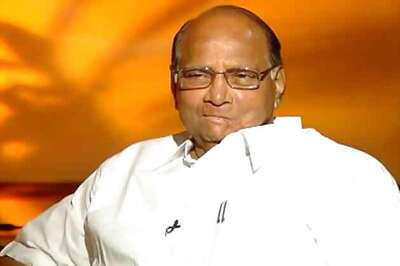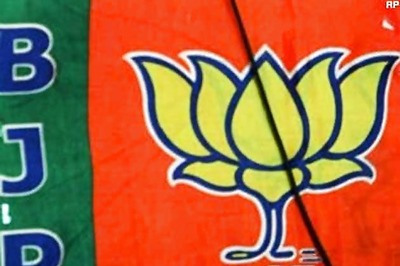
views
New Delhi: Political parties draft their constitutions very carefully. The challenge to leadership and other disputes are taken to the Election Commission and courts of law. For adjudication, both the EC and courts rely on what has been laid down in the constitutions of the party under dispute.
The powers of a party president, thus, are meticulously spelt out to avoid any contention or disputes. Parties even seek to define unambiguously who would be in command if the president were to resign or is not in a position to oversee the day-to-day working of the organisation.
Congress President Rahul Gandhi on Wednesday officially put in his papers. The party constitution says that if the president resigns, the senior-most general secretary of the party takes over in the interim until a new leader is chosen.
In terms of organisational hierarchy, the general secretary in-charge of the organisation is the most powerful post after that of the president. The post is currently held by former minister KC Venugopal. In terms of experience, former Madhya Pradesh MP and in-charge of administration Motilal Vora is the senior-most general secretary.
For the first time since its metamorphosis from the Jan Sangh to the BJP, the current ruling party has a working president. This makes JP Nadda a clear number two in the organisational hierarchy.
An interesting situation evolved during NDA-I when a sting operation showed the then party president, Bangaru Laxman, accepting bribes. As the controversy snowballed, Laxman called up Atal Bihari Vajpayee and offered to put in his papers. “Please send it to Jana ji,” was Vajpayee’s terse response.
Jana Krishnamurthy was the senior-most general secretary of the party who would take charge of affairs till an alternative arrangement was made.
Laxman complied, Krishnamurthy worked as party chief in the interim until LK Advani’s Kamaraj plan in the BJP. Two senior ministers were pulled out of the government and sent back to the organisation to prepare for the 2004 Lok Sabha elections. Venkaiah Naidu, thus, became the BJP president and Pramod Mahajan returned to the party as general secretary.
In the Bahujan Samaj Party (BSP), the national vice-president is the undisputed number two. In fact, the party constitution allows for only one vice-president. Earlier this week, BSP chief Mayawati appointed her brother, Anand Kumar, to the post.
Speaking at a rally in Lucknow a decade ago, Mayawati had announced her successor would be from the ‘Jatav’ community. And most importantly, the chosen one — she underscored — would not come from her immediate family.
Interestingly, for many years within and outside BSP circles, it was widely speculated that Raja Ram, a young party MP in the Rajya Sabha, fitted the bill. He was also appointed BSP vice-president in the later years, a post held by Mayawati herself when Kanshi Ram was active in politics. Not many know about Raja Ram’s current status in the BSP.
Apart from lending political leadership to the party, the president is generally the authority to sign the Election Commission documents by way of which party symbols are allocated to candidates. The Rashtriya Janata Dal faced this problem in the just-concluded Lok Sabha elections as party chief Lalu Prasad was serving term in the fodder scam.
The RJD found a way around this hurdle by nominating Lalu’s wife and former Bihar Chief Minister Rabri Devi as the signing authority for the B-form, which is the legal document seeking allocation of the party symbol to a candidate.
The Congress, after its second consecutive defeat, is trying to find its feet and a successor to Gandhi who thus far has remained steadfast over his decision to quit as party chief. Earlier, Sonia Gandhi was elected as leader of the Congress Parliamentary Party, a post with powers to appoint leaders in both Houses of Parliament.
Over the last month, most of the decisions in absence of an acting president have been through a signed communique by General Secretary in-charge of organisation, K Venugopal.
In the CPM, the top political post in the party echelons is that of the general secretary. The general secretary is chosen for three years by the party Congress. If the general secretary resigns, the daily affairs of the party are conducted by the Politburo till the time 90-odd members of the central committee meet to elect a new general secretary.
The Samajwadi Party witnessed a prolonged internecine war within the family two years ago, with matters between Akhilesh Yadav and his uncle, Shivpal, going to the Election Commission.
Politically and technically, Mulayam Singh Yadav was the party president. The number two was not defined. The transfer of power to Akhilesh was, thus, meticulously planned. He was elected party president at a hurriedly-called national convention in Lucknow on January 1, 2018. The papers were well in order. The resolutions were signed and passed in media glare.
Interestingly, Mulayam Singh all along claimed to have stood by his brother Shivpal.
Akhilesh’s election was later challenged in the EC. The son won the case and leadership of the party, while the challenger in uncle Shivpal had to quit and form his own outfit.



















Comments
0 comment